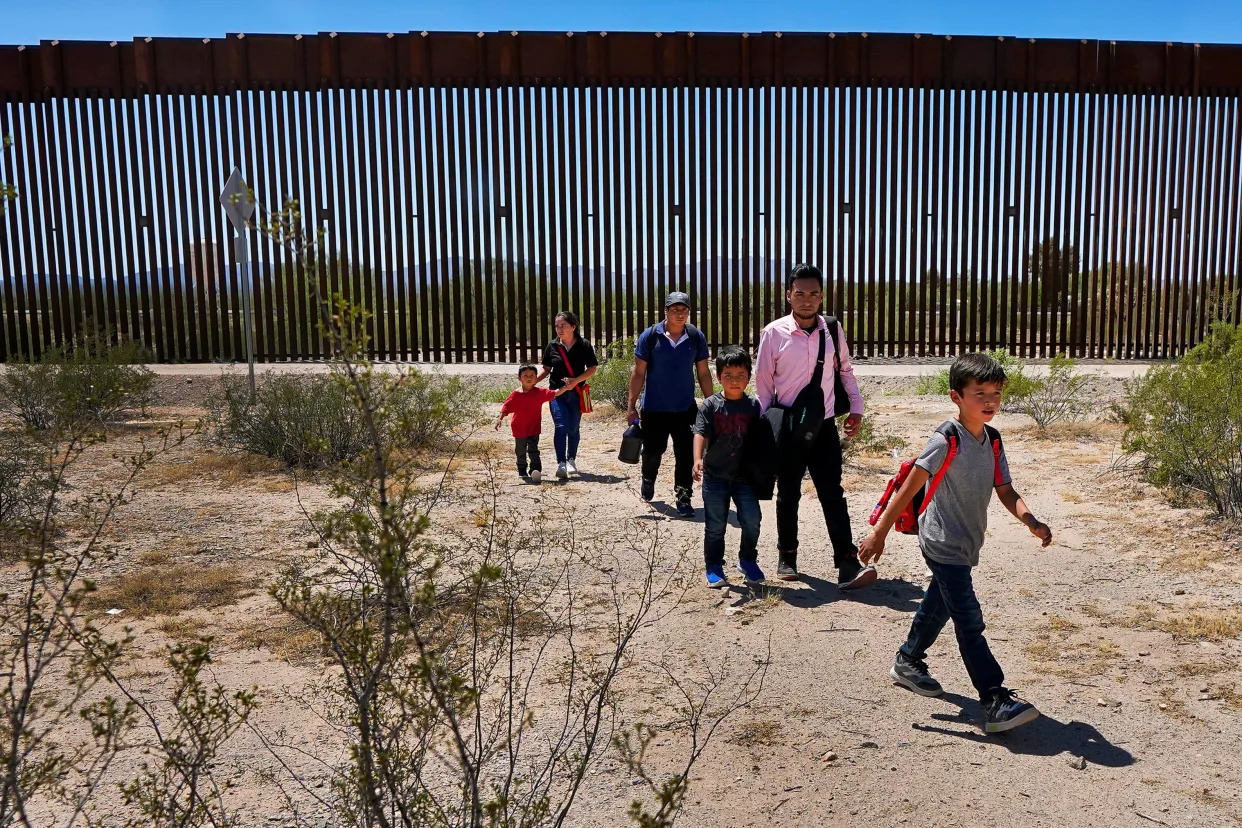Rafael Carranza, Arizona Republic
Sat, September 16, 2023

New estimates show how the number of unauthorized migrants living in the United States grew slightly despite global restrictions on travel at the onset of the COVID-19 pandemic to reach 11.2 million.
That's an increase of 200,000 from 2019, according to a new report from the nonpartisan Migrant Policy Institute, which analyzed data from the U.S. Census Bureau's American Community Survey.
The estimates of the unauthorized immigrant population in the U.S. are based on the 2021 survey, meaning that those numbers do not reflect the historic increase in encounters along the U.S.-Mexico border over the past two years and the expansion of humanitarian parole programs since the removal of pandemic restrictions at the border.
Ariel Ruiz Soto, one of the report's authors and a senior policy analyst at the Migrant Policy Institute, said this means the numbers today are likely much higher even though the federal government has boosted deportations.
"If you look at the border today, you'll see that of the thousands of people that come every day in the country, more of them are seeking asylum. And that asylum process takes a long time," he said. "So because of the way that we measure our estimates, asylum seekers who seek protection defensively, meaning that they irregularly and are in the process of removals would have to wait for years to go to an immigration court would be included in our estimates. And because of that, it is likely that the numbers will certainly have increased in 2022 and 2023."
What the available data does show is the continuation of a trend that has been building for nearly two decades, a reversal in migration from Mexico. Since peaking at 7.7 million in 2007, the Migrant Policy Institute said the number of unauthorized immigrants from Mexico has dropped to 5.2 million in 2021 as more of them return to Mexico.
That means that Mexican immigrants account for less than half (46 percent) of the total unauthorized immigrant population in the United States. As the share of Mexican immigrants has fallen, representation from other countries has surged.
Ruiz Soto said they especially saw an increase in the number of migrants from places farther away. In addition to Mexico and the Northern Triangle countries of Guatemala, Honduras and El Salvador, the institute's analysis identified a notable rise in unauthorized immigrants from South American countries such as Venezuela, Colombia and Brazil. Three Asian countries round out the top 10 countries of origin: India, China and the Philippines.
Opinion piece on immigration in Arizona: A little border chaos makes 'The View' sound less Manhattan and more Phoenix
The overall unauthorized immigrant population has remained relatively stable at about 11 million for nearly two decades. The report attributed that to U.S. immigration removal policies, adding that nearly 4.7 million immigrants have been deported from the country since 2008.
While the unauthorized immigrant population increased by 200,000 during the pandemic, Ruiz Soto said, the travel restrictions not only kept people out, but many immigrants were unable to leave the country. Additionally, in the aftermath of pandemic lockdowns, the U.S. began to expel all migrants at the border using a public health rule known as Title 42. Under that policy, the U.S. turned away 2.8 million migrants.
The report noted that while they used the term "unauthorized" to refer to the immigrants living in the United States without a legal visa or green card, those numbers include thousands of individuals with temporary protections, including humanitarian parole or deferred action or DACA recipients.
No comments:
Post a Comment